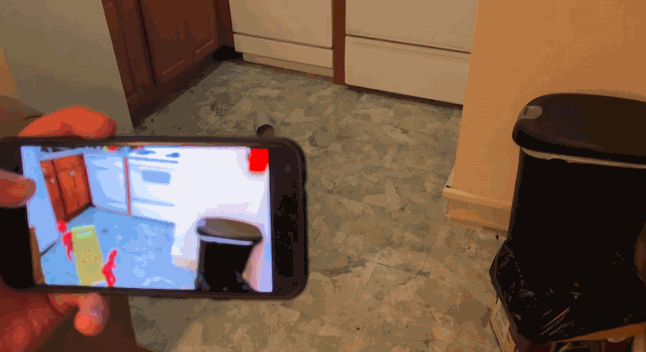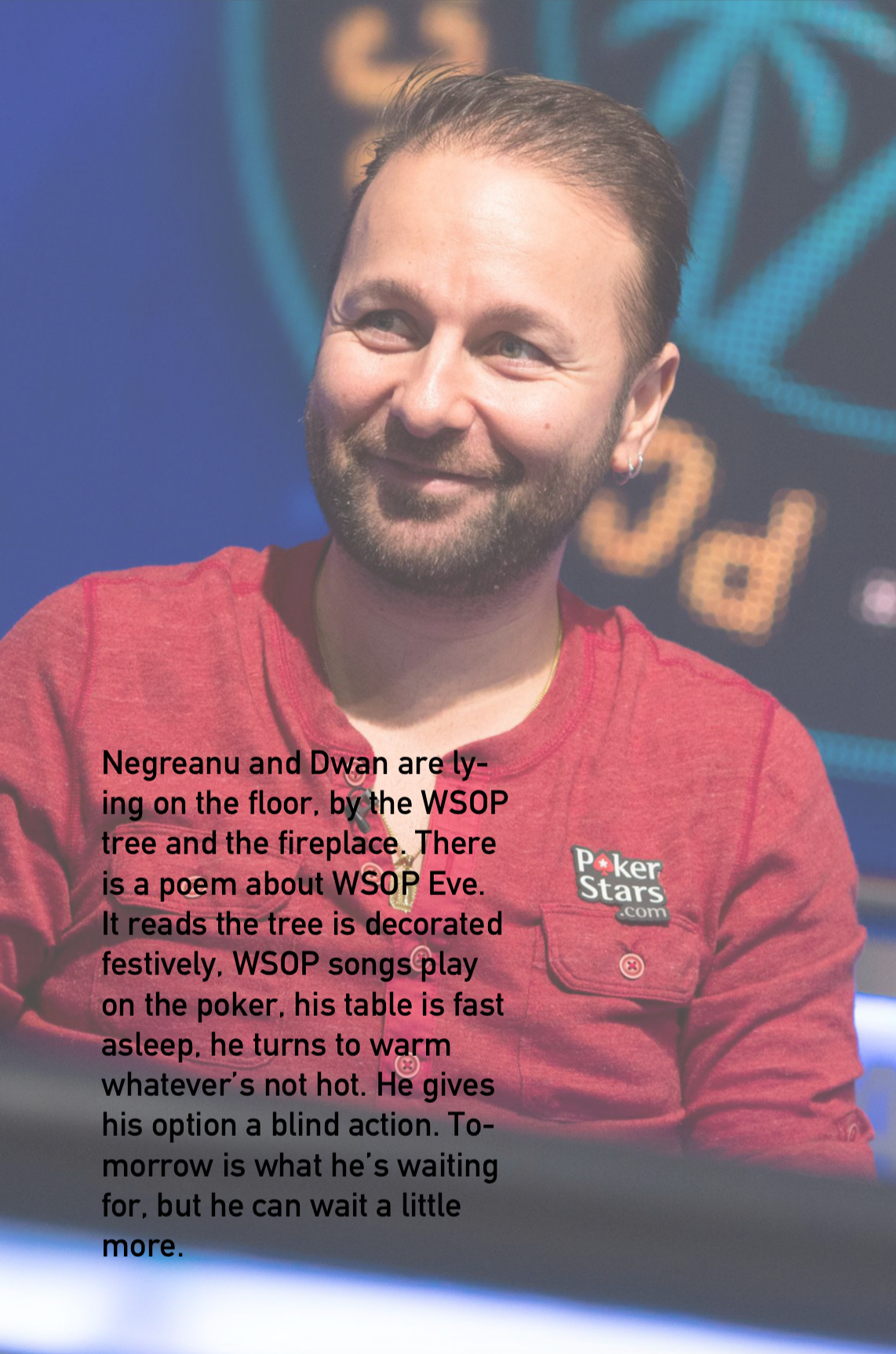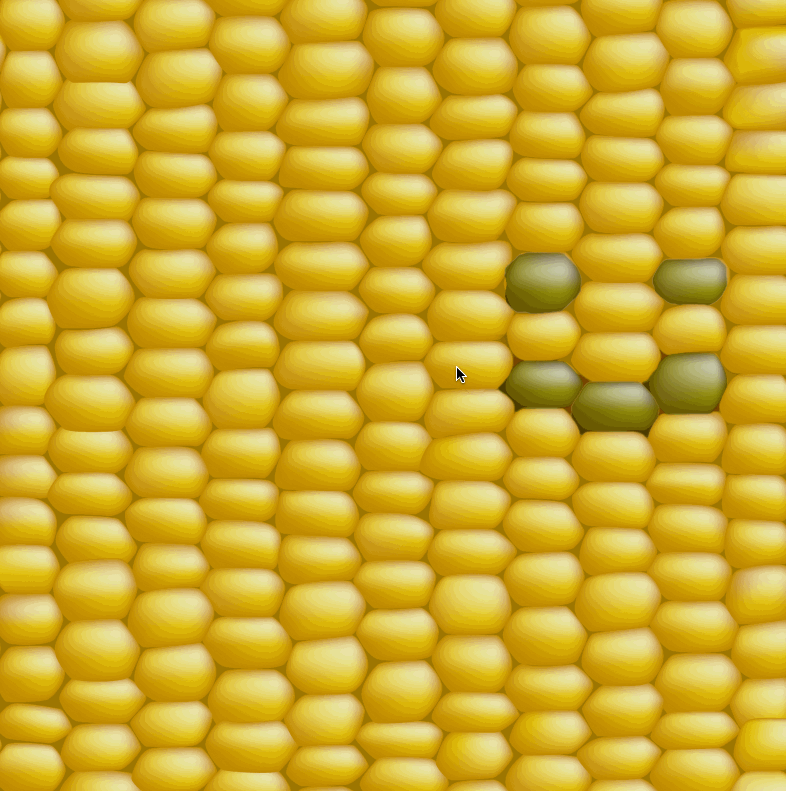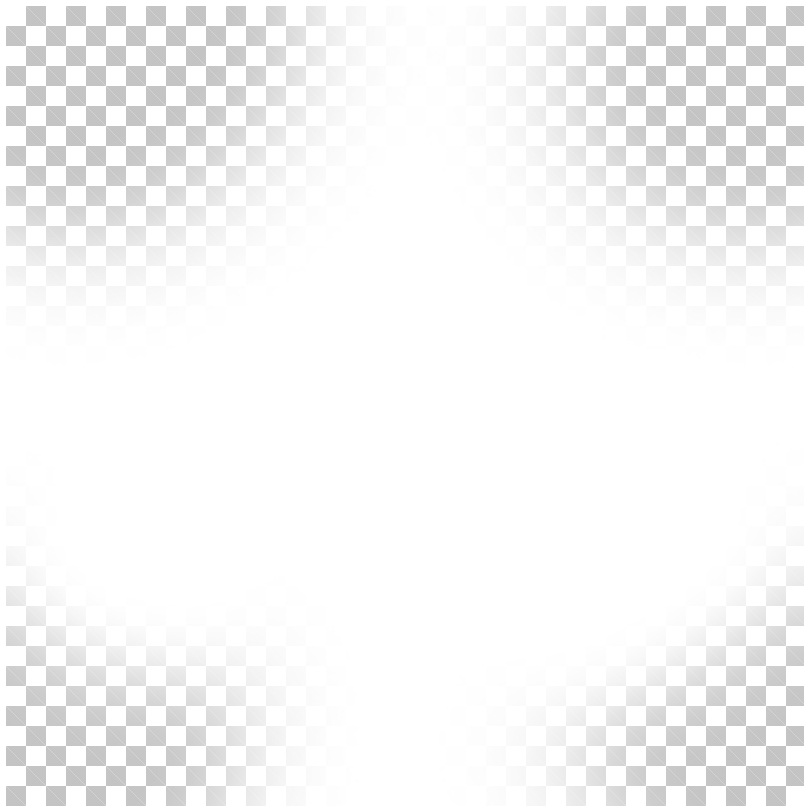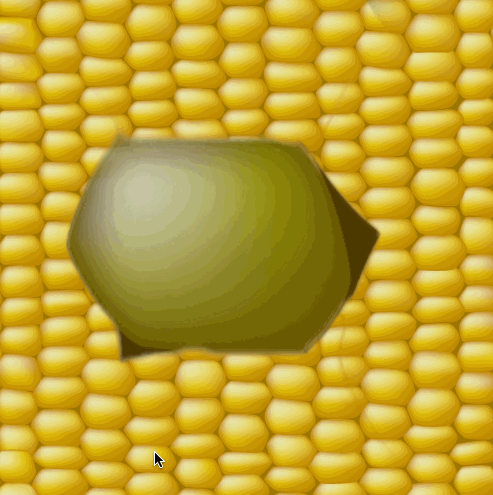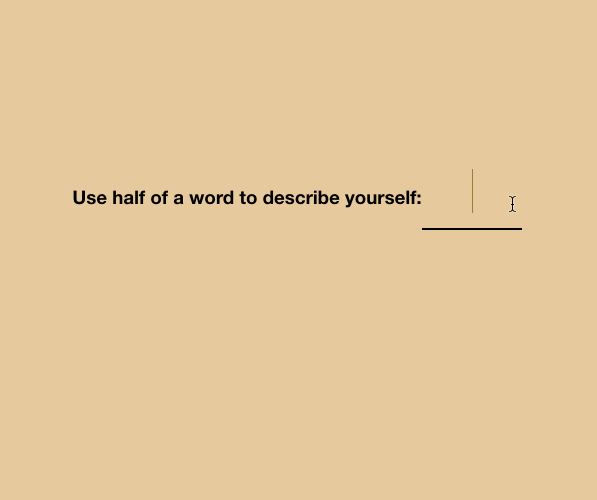var kernels = [];
var activeKernels;
var colSize;
var rowSize;
var img;
var kern1;
var kern2;
var kern3;
var kernMask;
var randDelay;
var t = 0;
var blink = 0;
var faces = [
[
[
[1, -1],
[-1, -1],
[-1, 1],
[0, 1],
[1, 1]
],
[
[1, -2],
[-1, -2],
[1, 0],
[-1, 0],
[0, 1]
]
],
[
[
[2, -2],
[-2, -2],
[-2, 1],
[-1, 2],
[0, 2],
[1, 2],
[2, 1]
],
[
[2, -2],
[-2, -2],
[-2, 1],
[-1, 1],
[0, 2],
[1, 1],
[2, 1]
]
]
,[[[0,0],[0,-1]],[[0,0],[1,-1]]]];
var rat;
function preload() {
img = loadImage("assets/corn_0.png");
kern1 = loadImage("assets/corn_1.png");
kern2 = loadImage("assets/corn_2.png");
kern3 = loadImage("assets/corn_3.png");
kernMask = loadImage("assets/corn_matte.png");
}
var ctracker;
function setup() {
// setup camera capture
randDelay = random(50,200);
var videoInput = createCapture();
videoInput.size(400, 300);
videoInput.position(0, 0);
// setup canvas
cnv = createCanvas(800, 800);
rat = 2000 / width;
rowSize = height / 16;
colSize = width / 11;
loadKernels();
cnv.position(0, 0);
// setup tracker
ctracker = new clm.tracker();
ctracker.init(pModel);
ctracker.start(videoInput.elt);
noStroke();
}
function draw() {
push();
translate(width,0);
scale(-1,1);
clear();
strokeWeight(5);
image(img, 0, 0, width, height);
//image(kern1,0,0,width, height);
//image(kernels[ck[0]][ck[1]].img,0,0,width,height);
// get array of face marker positions [x, y] format
var positions = ctracker.getCurrentPosition();
var p = positions[62];
var q = positions[28];
var r = positions[23];
// for (var i = 0; i < positions.length; i++) { // stroke("black"); //if (i == 23) stroke("green"); // set the color of the ellipse based on position on screen //fill(map(positions[i][0], width * 0.33, width * 0.66, 0, 255), map(positions[i][1], height * 0.33, height * 0.66, 0, 255), 255); // draw ellipse at each position point //ellipse(positions[i][0], positions[i][1], 8, 8); // } if (p != undefined) { var d = dist(q[0],q[1],r[0],r[1]); var size = 0; if (d>110) size =1;
if (d<40) size =2; var ck = getCoors(map(p[0],0,255,0, 800),map(p[1],0,255,0, 800)); drawFace(ck[0], ck[1], size); } pop(); if (t>=randDelay) {
t=0;
blink=7;
randDelay = random(50,200);
}
t++;
if (blink>0) blink--;
print (p);
}
function Kernel(col, row) {
this.col = col;
this.row = row;
this.x = colSize * (col + 0.5);
this.y = rowSize * (row + 0.75);
this.upCol = col % 2 == 0;
if (this.upCol) this.y -= rowSize / 2;
this.img = img;
if (col % 2 == 0) {
if (row % 3 == 0) this.img = kern2;
if (row % 3 == 1) this.img = kern3;
if (row % 3 == 2) this.img = kern1;
} else {
if (row % 3 == 0) this.img = kern1;
if (row % 3 == 1) this.img = kern2;
if (row % 3 == 2) this.img = kern3;
}
this.show = function() {
var l = this.x - colSize;
var gLeft = l * rat;
var t = this.y - rowSize;
var gTop = t * rat;
var w = colSize * 2;
var gWidth = w * rat;
var h = rowSize * 2;
var gHeight = h * rat;
var dis = this.img.get(gLeft, gTop, gWidth, gHeight);
dis.mask(kernMask);
image(dis, l, t, w, h);
};
}
function loadKernels() {
var col = [];
for (var c = 0; c < 11; c++) {
for (var r = 0; r < 16; r++) {
col.push(new Kernel(c, r));
}
kernels.push(col);
col = [];
}
}
function getCoors(x, y) {
var col = x / colSize - 0.5;
if (round(col) % 2 == 0) y += rowSize / 2;
var row = y / rowSize - 0.75;
if (col < 0) col = 0; if (col > 10) col = 10;
if (row > 15) row = 15;
if (row < 0) row = 0;
return [int(round(col)), int(round(row))];
}
function drawFace(col, row, size) {
var face = faces[size][0];
if (col % 2 == 0) face = faces[size][1];
var p;
var c = 0;
var r = 0;
for (var i = 0; i < face.length; i++) { p = face[i]; c = int(col + p[0]); r = int(row + p[1]); if ((c >= 0 && r >= 0 && c < 11 && r < 16)&&
!(blink!=0&&p[1]<0))kernels[c][r].show();
}
} |
